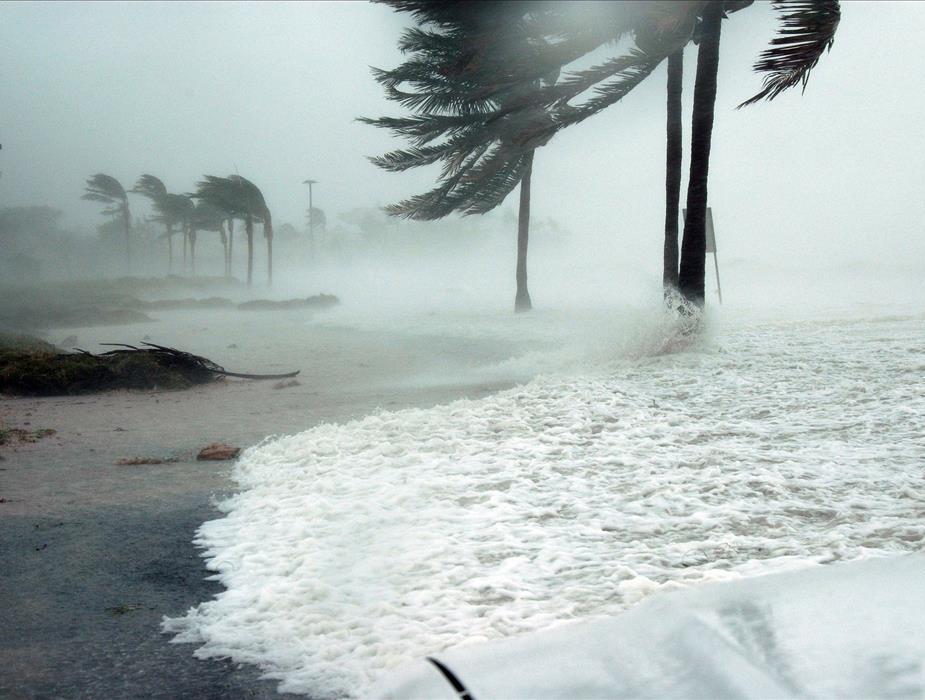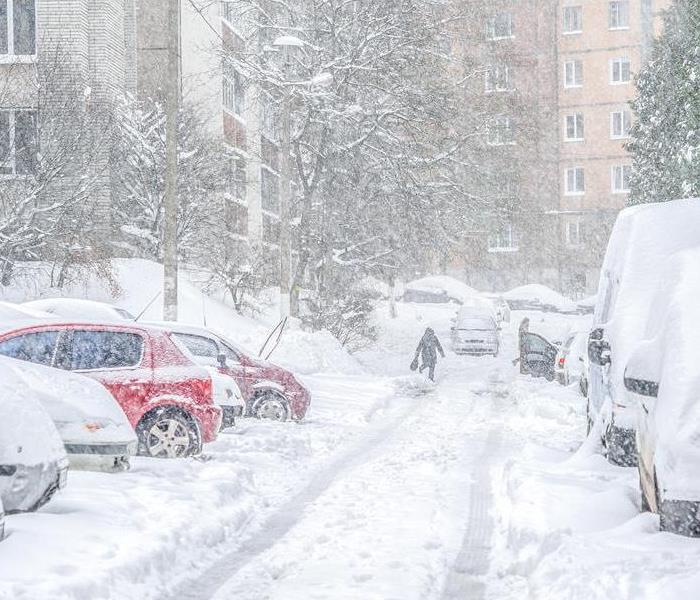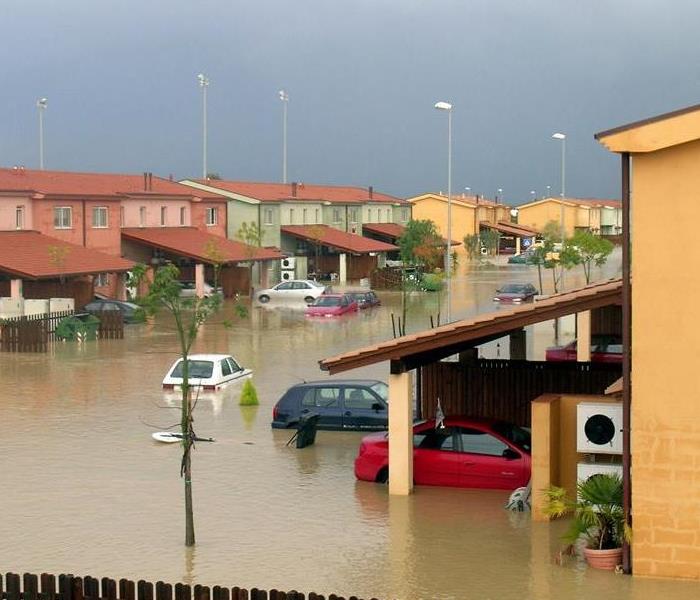Recent Storm Damage Posts
SERVPRO® Deploys Disaster Recovery Team to Assist in Storm Cleanup Following Hurricane Ida
9/20/2021 (Permalink)
 SERVPRO’s Disaster Recovery Team has been activated to help residents and business owners in storm-damaged areas in Louisiana, Mississippi, and NY.
SERVPRO’s Disaster Recovery Team has been activated to help residents and business owners in storm-damaged areas in Louisiana, Mississippi, and NY.
GALLATIN, Tennessee, August 30, 2021--SERVPRO’s Disaster Recovery Team has been activated to help residents and business owners in storm-damaged areas in Louisiana and Mississippi. SERVPRO’s Disaster Recovery Teams will be assisting more than a dozen local franchises already located in the affected areas. SERVPRO has more than 200 crews ready to mobilize, with some crews already on the ground ready to assist home and business owners.
After the water begins to recede and authorities determine it is safe for residents to return to their property, there are several steps that can be taken to prevent additional damage from occurring. SERVPRO suggests the following steps to help minimize additional damage to your property while waiting for disaster professionals to arrive.
- If water has entered the structure through the flooding of a creek, stream, or river, or if it has filtered through insulation during its intrusion, it is considered to be black water and could be hazardous to your health. Avoid contact with contaminated items as much as possible.
- Take the greatest caution while entering your home, and wear sturdy shoes and protective clothing when dealing with flooded areas.
- Do not attempt to operate any electrical equipment while standing in wet or damp locations.
- Throw away all foods—even canned goods—that have come into contact with floodwaters. Without power, refrigerated foods may spoil in as few as 4 hours; frozen food spoils in 24 hours.
- Remove and prop wet upholstery and pillow cushions for drying. Wipe excess water from wood furniture after removal of lamps and tabletop items.
- If your home has a crawlspace, be aware excess moisture in this area can often foster mold growth.
- The frequent use of hand sanitizer (with at least 60% alcohol content) and disinfecting wipes may help prevent illness and infection.
- If using a portable generator, keep it outdoors at all times and at least 20 feet from doors and windows to prevent carbon monoxide poisoning.
SERVPRO’s Disaster Recovery Team mobilizes from across the country, as needed, to support large storm events. SERVPRO’s Disaster Recovery Team has responded to large loss and storm events across the country, including: 2021 Winter Storm Uri, 2020 Hurricane Laura, 2019 Hurricane Dorian, 2018 Camp Wildfire, 2018 Hurricane Michael, 2018 Hurricane Florence, 2017 Hurricane Irma, 2017 Hurricane Harvey, 2016 East Tennessee Wildfires, 2016 Hurricane Matthew, 2016 Louisiana Flooding, 2016 Houston Flooding, 2015 Siberian Express, 2014 Mid-Atlantic Flooding, 2014 Polar Vortex, 2013 Colorado Floods, 2013 Alberta, Canada Floods, 2012 Hurricane Sandy, 2012 Hurricane Isaac, 2011 Hurricane Irene, and Tropical Storm Lee.
Why was the Texas freeze such an unprecedented event?
5/14/2021 (Permalink)
Here is a portion of an article reposted from Insurance Business America. Great job to SERVPRO!
By Bethan Moorcraft
“This really was an unprecedented event,” said Mike Stahl, CMO at SERVPRO, the largest restoration company in the United States. SERVPRO had hundreds of storm crews on the ground throughout Winter Storm Uri, meeting record-breaking demand from customers. Stahl commented: “In our 50-year history, Winter Storm Uri produced our number one volume day, as well as our number two, four, seven and 10 volume days. That’s a strong indication of just how significant this event was.”
The situation in Texas was unique because it was a winter storm coupled with a major power failure. The power outages aggravated the impacts of the deep freeze, causing a surge of burst pipe claims in several major Texas cities, including Houston and Dallas. Generally speaking, most homeowners’ insurance and standard commercial property policies will cover water damages caused by burst pipes – as long as they burst through sudden and unforeseen events, as was the case with Winter Storm Uri.
“This is another unprecedented factor about the Texas deep freeze event,” said Stahl. “It’s more of an insured event than some other catastrophic weather events. For example, when there’s a hurricane, there are often a lot of flood claims that are not covered by homeowners’ policies or commercial property policies. Insureds have to hold separate flood insurance policies to make those claims. But the vast majority of claims to come out of this event were frozen pipes bursting, which are generally covered in standard policies.”
Restoration companies like SERVPRO, and the insurance companies that they partner with, not only had to deal with record claims volume during Winter Storm Uri, but they also had to navigate additional challenges posed by the COVID-19 pandemic.
“When there’s a catastrophic storm event, restoration companies and the insurance industry have to bring in capacity from all over the country,” explained Stahl. “The local capacity is there to deal with a normal variation of volume or customer demand, but not the extreme variation that you get in catastrophic events.
“Bringing in extra capacity was challenging with the Texas deep freeze. Not only did we have COVID-related travel advisories, quarantine rules, and health and safety guidelines to follow, but we were also contending with the fact that the winter storm hit other areas of the country. Most nearby states - including Kansas, Missouri, Oklahoma, Tennessee – were covered in snow. They were already seeing excessive customer demand and had less capacity to send to Texas. A storm is always a capacity challenge relative to the demand.”
After A Storm, Water In Buildings
5/10/2021 (Permalink)
Call SERVPRO when outside water makes its way indoors!
SERVPRO is a leader in disaster restoration. Our services include water damage, fire damage, and mold remediation.
Water damage can occur for several reasons, including burst pipes, broken appliances, and flooding from natural disasters.
One of the most common types of water damage calls we receive after storms is called water ingress.
What is water ingress?
Water ingress, also known as penetrating damp, is when water from outside infiltrates a property. It happens for various reasons and ways.
Put another way, whenever water passes through walls and comes inside the property, it’s water ingress.
Water making its way into your building or house is something to worry about because it could result in damage and lead to expensive and further problems.
The damage can include fungal decay, destruction of the decoration, and long-term mold issues associated with dampness. These can have effects on your health and lifestyle; therefore, preventing water ingress is crucial. The solution? Contact a local water ingress expert like SERVPRO.
Causes of water ingress in buildings:
There are several reasons for water ingress. Here are some of the most common:
- Damaged Walls - deteriorated wall results in seals between mortar and brickwork becoming porous; this allows water through the wall, otherwise known as water ingress.
- Defective or leaking drainage - cracked, blocked, and defective downpipes with faulty seals are one of the main reasons for penetrating damp and water ingress.
- Roof damage - Any missing shingles or defective seals will allow water ingress. Roof maintenance and inspection are essential in identifying broken or missing tiles or seals to prevent this water entryway.
- Leaky basement window seals - if there are broken or damaged seals around basement windows, the waterproofing capabilities are diminished, and water will likely ingress into the building.
- Flash Flooding - If your residency is in an area where floods are common, then the large volume of water is a common factor for resulting water ingress
In short, defects in the building, such as cracks, put your property at risk of water ingress. Water ingress risk increases with a large volume of water from flash floods or storms.
Where can water ingress?
Water ingress in basements, cellars, and roofs has the greatest chance of occurrence in any property.
If you’re going to assess where water ingress has a chance for developing on your property, you should look at these common signs:
- Plaster peeling off the wall
- Damp, musty smell in the attic or basement
- Mold growth on any wall
- Damp patches on any wall
- Visible water in basement or attic
Type C waterproofing systems are widely known and used to drain out the water safely from the property. If you suspect your waterproofing system is damaged, contact a waterproofing specialist like SERVPRO. We deal with all kinds of queries and are here to serve and assist you.
Water ingress mitigation
In mitigation, you first need to assess the situation. The most crucial stage to treat the water ingress is to check the dampness and determine the water’s source. After the assessment, professionals must remove moisture and water from your property from both the structure and air itself. The last step of the mitigation process is the restoration and sanitation of the property to return to a healthy and safe condition. Trust the professionals at SERVPRO to determine the cause of the situation and provide the necessary steps for repairs.
Regular checks will help ensure that building defects will not be hazardous and stop the water from making its way into the property. Efficient and fast clean up is crucial; we have water ingress mitigation specialists to help your business get in the pre-disaster condition and become fully operational again.
Suppose you’re struggling with any damp related issue or water ingress. In that case, SERVPRO is the preferred water restoration vendor for many insurance companies. They will help you diagnose and identify the solution so you can be free from water ingress and dampness-related issues.
Water mitigation is an essential part of restoring your property. Address any water damage signs as soon as you spot them—this will save you from long-term hassles, time, and further costs. SERVPRO specializes in drying, cleaning, restoring, and sanitizing your property. Contact us if you’ve noticed water ingress at your office, business, or home. We are here to assist you!
 SERVPRO’s Disaster Recovery Team has been activated to help residents and business owners in storm-damaged areas in Louisiana, Mississippi, and NY.
SERVPRO’s Disaster Recovery Team has been activated to help residents and business owners in storm-damaged areas in Louisiana, Mississippi, and NY.

 24/7 Emergency Service
24/7 Emergency Service

